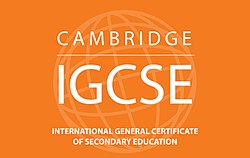
Purdue University is an Indiana land-grant university. It has more than seven thousand students. It has five institutions and six traditional campuses. Purdue Online offers students many ways to earn an online degree. Students can choose from a variety of programs online to suit their learning style.
ExcelTrack(tm) programs allow you to speed past topics you already know
ExcelTrack(tm) programs are one-credit courses that leverage your existing knowledge to focus on the specific pieces of information you need to learn. You can also move at your own speed. You can take as many ExcelTrack(tm) classes as you want during a term and pay a flat tuition rate. This option is great for students who are interested in learning and can manage their time well.
ExcelTrack courses, which are competency-based, allow students to complete a degree more quickly and with greater flexibility. These programs combine the learning outcomes from traditional college courses with one-credit modules. These courses are flexible enough to allow students to progress at their own pace and still meet industry and employer requirements.

Open admissions policy
Purdue requires students to have a high-school diploma or equivalent. This is Purdue’s open admissions policy. After a student has met the minimum admissions requirements, he or she will need to provide proof of high school graduation and transcripts from high school. Next, students will need to fill out the Common Application. This requires them to submit a personal essay as well as answer specific questions about the college.
Purdue University charges $60 for application fees. Some schools waive the application fee for students who have financial need. To be admitted to Purdue in fall 2019, students must apply by December 12. Purdue is not open to students who are interested in early decision or immediate action admissions. Some programs allow students to apply earlier, such as the Honors College. This program costs an additional USD 200.
Faculty buy-in
The move to the Purdue online campus has caused confusion among campus faculty members. Many aren't sure what the differences between Purdue Global or Purdue Online are. Drummond believes this is a transition period. But he is hopeful that this transition will lead to more faculty buy-in and more effective instruction.
Online courses are only successful if the faculty buy in. Purdue will need to continue its efforts in order to tap into the online education marketplace. Many institutions were reluctant to move to online learning. They are still trying reaching the prototypical student. A typical student online is someone who graduated in 1998 from Oklahoma State University, worked at ConocoPhillips for 20 years, and wants to learn more skills. This type of student will not be interested in a Purdue graduate's degree.

Financial aid
Purdue University offers students a wide range of financial assistance options including grants and loans. Purdue's financial aid percentage is slightly higher that the national average. This is thanks to a combination of federal and institutional aid. Check with your financial aid officer to find out which programs might be able to help pay for school. You might be eligible to receive private scholarships, loans, or grants if your financial aid office doesn't approve you for loans and grants.
Purdue can be costly. Cost per credit hour can vary from $150 up to $549. Purdue University's Division of Financial Aid manages financial aid. Students who have completed a 12-week-long graduate program may apply for financial aid twice per semester. Students who have been away at Purdue for five or more years can also apply to academic renewal. After applying for financial help, you must file a FAFSA.
FAQ
What's the difference between private and public schools?
All students are eligible to attend public schools for free. They provide education for students from kindergarten through highschool. Private schools charge tuition fees per student. They offer education from preschool until college.
Charter schools, which are private but publicly funded, are also available. Charter schools do not follow the traditional curriculum. They allow students more freedom to discover what interests them.
Parents who believe that their children should be able to access quality education no matter what their financial situation are fond of charter schools.
How long should I spend preparing for college?
How much time you have available to study and how long it takes to prepare for college will determine the amount of time you spend on preparation. Start taking college preparation courses as soon as you finish high school if you want to be able to go straight to college. On the other hand, if you plan to take several years off before attending college, you probably don't need to begin planning until later.
You should discuss your plans with your parents and teachers. They may suggest certain courses of study. Be sure to keep track of the courses you've taken and the grades you received. This will allow you to know exactly what you need for next year.
What is homeschooling?
Homeschooling is an educational method where children are educated at home by their parents. It is also known by the names private education or self-education.
Homeschooling is a great option for families who want to teach their kids at home. This allows them access to a quality education while staying at home.
From birth, parents educate their children until high school. They decide on the subjects they want to study and how much time each subject should take. Every subject is taught by the student in his/her own time.
Parents decide when to begin teaching their children. Most schools recommend that children start classes at age four to twelve years. However, some families prefer to wait until their children are in kindergarten before they start teaching.
Parents may use any number of resources to guide them through the curriculum. You can learn valuable lessons from books, videos, websites and magazines.
Many families find homeschooling a great fit for their busy schedules. Parents can spend more time with their children than in traditional public schools.
How long should I study each semester?
The amount of time that you spend studying depends on several factors.
Other than these factors, you may need to take certain classes each school year. This means that you may not be able to take as many courses each semester. Your advisor will tell you which courses are required for each semester.
What does it mean to be a teacher in early childhood education?
Early childhood educators must have specialized training. Before being permitted to teach in public schools, most states require that candidates for teaching positions have been certified by a state board.
Some states require teachers passing tests in math and reading.
Some states require that teachers have completed a minimum number of courses related to early childhood education.
Most states have minimum requirements that teachers must know. These requirements can vary from one state to the next.
Do you need to go to college to become an early childhood educator?
No, but you might want to consider going to college to prepare yourself for a future career in the field.
It is crucial to realize that teaching is not an easy job. Each year, many applicants are rejected from programs. Many students also quit college after only one semester.
To become a teacher, you must also meet certain qualifications.
What are the various types of early childhood education available?
There are many different ways to describe early childhood education. The most common ones include:
-
Preschool - Children ages 2 to 5
-
PreKindergarten- Children from 4-6 years of age
-
Head Start/Hestart - Children aged 0-3
-
Day Care/Daycares - Children from 0-5 Years
-
Child Care Centers - Children ages 0 to 18
-
Family Childcare - Children between 0 and 12 Years Old
-
Homeschooling – Children from KG up to 16
Statistics
- They are also 25% more likely to graduate from high school and have higher math and reading scores, with fewer behavioral problems,” according to research at the University of Tennessee. (habitatbroward.org)
- They are more likely to graduate high school (25%) and finish college (116%). (habitatbroward.org)
- In most developed countries, a high proportion of the population (up to 50%) now enters higher education at some time in their lives. (en.wikipedia.org)
- Globally, in 2008, around 89% of children aged six to twelve were enrolled in primary education, and this proportion was rising. (en.wikipedia.org)
- And, within ten years of graduation, 44.1 percent of 1993 humanities graduates had written to public officials, compared to 30.1 percent of STEM majors. (bostonreview.net)
External Links
How To
Where can I go to be a teacher?
There are many teaching jobs available in public elementary and private schools.
To become a teacher, you must first complete a bachelor's degree program at one of the following:
-
A four-year university or college
-
Associate's degree program
-
Some two-year community college programs
-
These programs may be combined
To be eligible for teacher certification, applicants must satisfy state requirements. These requirements include passing standardized tests, and completing a probationary phase of work experience.
Most states require that all candidates pass the Praxis 2. This test measures the candidate’s knowledge in reading, writing mathematics, and language arts.
Many states also require candidates to obtain a specialized license before being certified to teach.
These licenses are issued annually by the state boards of education.
Some states grant licenses without requiring any additional testing. In these cases, the applicant should contact the board of education in his or her state to determine if this is true in your area.
Some states won't issue licenses to applicants without a masters degree.
Others allow students to apply directly for licensure to the state board.
The cost of licenses varies widely depending on their duration and the required coursework.
For instance, some states only require a high-school diploma, while others require at least a bachelor's degree.
Some states have specific requirements for training, such a literacy or child-development course.
Some states require that applicants have a master’s degree to become licensed.
Many states ask potential teachers about their past employment when applying to be certified.
You may want to mention that you have been employed in another occupation on your application.
However, most states will accept your prior work experience no matter what type of job you held.
You may wish to list your previous job title, position, and years of service.
This information is often helpful to potential employers.
It shows that they have relevant skills.
While working, you may have learned new skills and acquired valuable work experience.
Future employers can view your resume.